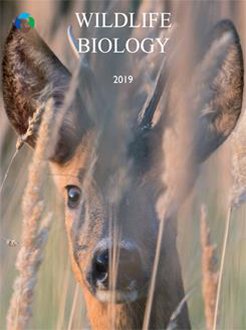Understanding how top–down and bottom–up effects influence population dynamics of ungulates is essential for effective management and conservation, and there is an emerging consensus that forage productivity and quality interact with predation to influence survival. From 2009 to 2013, we captured and monitored 135 neonatal black-tailed deer Odocoileus hemionus columbianus in coastal California to study possible interactions between forage and predation on survival. We estimated seasonal and annual survival rates, assessed the cause of all mortalities (n = 93), measured available forage and diet quality, estimated relative abundances of predators on summer range each year, and used remote sensing to quantify habitat types on winter range. We evaluated the relationship between fawn survival and environmental covariates with cumulative incidence and proportional hazards functions. Summer survival rates averaged 0.40 (SE = 0.05) across all years and the mean annual survival rate was 0.26 (SE = 0.04). We found that most juvenile mortality resulted from predation during summer, and spatial differences in summer survival persisted until recruitment. Variation in mortality risk from all causes was related to the birth weight of juveniles and available oak forage but not predator abundance. The risk of black bear predation, the single largest cause of mortality, was unrelated to birth weight and showed an interaction between bear abundance and the amount of oak forage. Additionally, the good body condition of adult females in spring and a lack of relationship between mortality risk and variation in deer density did not provide evidence for purely bottom–up limitation. Rather our results provide evidence that both bottom–up and top–down effects were influencing fawn survival in this declining population, and that predator identity and the timing of mortality affected the impact of predation.
How to translate text using browser tools
16 May 2019
Predator identity and forage availability affect predation risk of juvenile black-tailed deer
Tavis D. Forrester,
Heiko U. Wittmer

Wildlife Biology
Vol. 2019 • No. 1
2019
Vol. 2019 • No. 1
2019
age specific survival
black bear
coyote
forage quality
juvenile survival
predation forage interaction
ungulate





